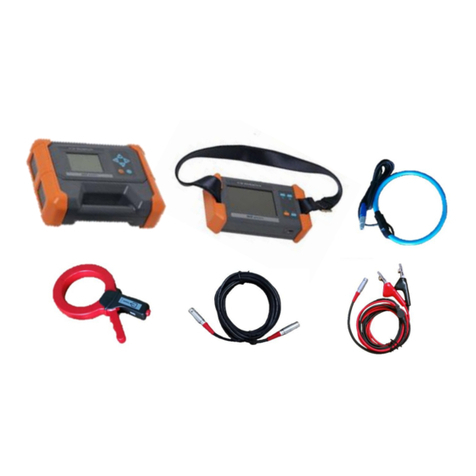Power cables at 35kV and below usually have three-cores, the insulating layers are relatively
thick and most of the insulation faults are either high resistance or flashover faults.
In both cases, the only available return path from the fault position is through the ground
surrounding the cable, which does not provide a return path suitable for using conventional
fault-finding equipment such as surge generators or TDR units. Hence alternatives have to
be found to measure the distance to the fault.
Traditionally, the DC bridge method has been used for sheath fault location which is simple
in operation, however, the accuracy is affected by the resistance of the fault and the
connecting wire, which may lead to significant errors.
3.1 DC resistance method
The DC resistance method calculates the fault distance by measuring the DC resistance from
the measuring point to the fault point. Unlike the traditional DC bridge method, this is not
affected by the resistance of the fault or the connection leads, hence the accuracy is higher.
The DC resistance method can be used to test the resistance of the main insulation and the
protection layer. The T-H200 uses this principle to find faults on high-voltage cable sheaths
and the main insulation which exhibit low grounding resistance, and joint failure.
The principle of the DC resistance test is shown in Figure 3.1. The faulty cable shield is
connected to a healthy core or to another healthy shield at the remote end. Using the
negative terminal of the DC power supply E, the current i is injected into the cable shield and
the DC voltage U1 is measured across the two line terminals. There is no current flow from
the fault point to the near end of the healthy shield where the voltage is measured,
therefore, they are of equal potential. The measured voltage U1 is effectively the voltage
drop across the faulty section of the shield. The DC resistance between the measurement
point and the fault point can thus be calculated as: R1 = U1/i.
Assuming the resistance per unit length is 0(Ω/km), the distance can be calculated as:
L= R1/ 0





























